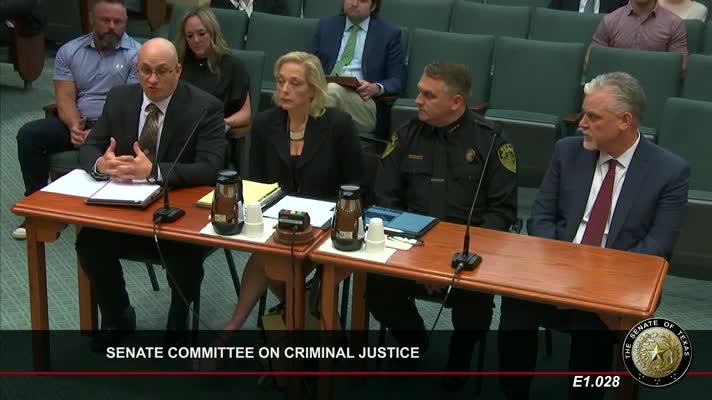Lawmakers confront challenges of AI generated child pornography
June 05, 2024 | Committee on Criminal Justice, Senate, Legislative, Texas

This article was created by AI summarizing key points discussed. AI makes mistakes, so for full details and context, please refer to the video of the full meeting. Please report any errors so we can fix them. Report an error »

In a recent government meeting, lawmakers and legal experts addressed the pressing issue of child pornography in the context of rapidly evolving artificial intelligence technologies. The discussions highlighted significant gaps in current legislation regarding AI-generated images that do not depict real individuals but could still be classified as child pornography.
One key point raised was the lack of statutes that specifically address images created through AI, particularly those that could be manipulated to appear as child pornography. A prosecutor noted a troubling scenario where images of adults could be altered to create child-like representations, raising serious legal and ethical concerns. The existing laws, which require the identification of a real child in the images, complicate enforcement efforts against such AI-generated content.
Senator Peter Wilson emphasized the need for legislative updates to better equip law enforcement in prosecuting offenders who exploit children through digital means. He urged for written suggestions on how to amend current laws to address these challenges effectively. The conversation also touched on the necessity of broadening the definition of obscene material to include AI-generated images, regardless of whether they are based on actual individuals.
Laurie Varnell from the Tarrant County District Attorney's Office shared her experience prosecuting child pornography cases, noting that current statutes often fail to capture the nuances of AI-generated content. She argued for a shift in focus from merely identifying real victims to addressing the harmful content itself, suggesting that the state needs to reconsider its approach to defining and prosecuting child pornography.
The meeting concluded with a consensus on the urgent need for legislative reform to keep pace with technological advancements. Lawmakers expressed a commitment to drafting specific proposals aimed at enhancing existing statutes to better protect children from exploitation in the digital age. The discussions underscored a collective recognition that as technology evolves, so too must the legal frameworks designed to safeguard vulnerable populations.
One key point raised was the lack of statutes that specifically address images created through AI, particularly those that could be manipulated to appear as child pornography. A prosecutor noted a troubling scenario where images of adults could be altered to create child-like representations, raising serious legal and ethical concerns. The existing laws, which require the identification of a real child in the images, complicate enforcement efforts against such AI-generated content.
Senator Peter Wilson emphasized the need for legislative updates to better equip law enforcement in prosecuting offenders who exploit children through digital means. He urged for written suggestions on how to amend current laws to address these challenges effectively. The conversation also touched on the necessity of broadening the definition of obscene material to include AI-generated images, regardless of whether they are based on actual individuals.
Laurie Varnell from the Tarrant County District Attorney's Office shared her experience prosecuting child pornography cases, noting that current statutes often fail to capture the nuances of AI-generated content. She argued for a shift in focus from merely identifying real victims to addressing the harmful content itself, suggesting that the state needs to reconsider its approach to defining and prosecuting child pornography.
The meeting concluded with a consensus on the urgent need for legislative reform to keep pace with technological advancements. Lawmakers expressed a commitment to drafting specific proposals aimed at enhancing existing statutes to better protect children from exploitation in the digital age. The discussions underscored a collective recognition that as technology evolves, so too must the legal frameworks designed to safeguard vulnerable populations.
View full meeting
This article is based on a recent meeting—watch the full video and explore the complete transcript for deeper insights into the discussion.
View full meeting
